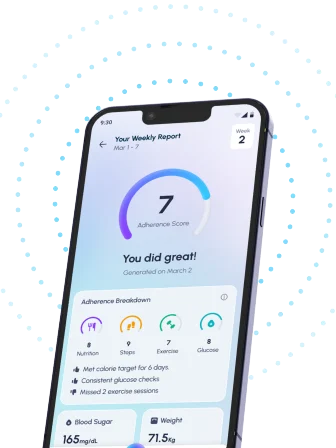Table of Contents
- Angina Pectoris in Diabetics: Recognizing the Symptoms
- Understanding Angina: Risk Factors for Diabetic Patients
- Is Chest Pain Diabetes-Related? A Guide to Angina Pectoris
- Diabetic Angina: Prevention Strategies and Treatment Options
- Managing Angina: A Comprehensive Guide for People with Diabetes
- Frequently Asked Questions
- References
Living with diabetes often means navigating a complex landscape of health concerns, and understanding angina pectoris is crucial for maintaining your well-being. This condition, characterized by chest pain or discomfort, can be particularly concerning for diabetics due to increased risk factors. In this guide, Understanding Angina Pectoris: A Diabetic’s Guide to Symptoms and Risk Factors, we’ll explore the telltale signs of angina, helping you recognize them and take proactive steps to manage your risk. We’ll break down the connection between diabetes and angina, providing you with the knowledge you need to feel empowered and informed. Learning about angina is a vital step in protecting your heart health. Let’s get started!
Angina Pectoris in Diabetics: Recognizing the Symptoms
Diabetes significantly increases the risk of heart disease, and angina pectoris is a common manifestation. Understanding the symptoms is crucial, especially given that 61% of people with diabetes in the 20-64 age group, a significant portion of the working population in many Indian and tropical countries, may be unaware of their risk. This age group is particularly active and may dismiss symptoms, delaying crucial intervention.
Typical Angina Symptoms
Typical angina symptoms include chest pain or discomfort, often described as pressure, squeezing, fullness, or pain in the chest, sometimes radiating to the left arm, jaw, neck, or back. This pain is often triggered by physical exertion, stress, or large meals and relieved by rest or medication like nitroglycerin. However, in diabetics, the symptoms might be atypical, presenting as fatigue, shortness of breath, nausea, or even a burning sensation. This is why early detection is critical.
Atypical Angina in Diabetics
Diabetic neuropathy can alter pain perception, leading to atypical angina presentations. The pain might be less intense or even absent, making it easy to dismiss. Furthermore, the prevalence of other diabetic complications can mask or mimic angina symptoms. For example, gastroparesis, a common diabetic complication, can cause chest pain that might be mistaken for angina. Therefore, increased vigilance and prompt medical attention are essential.
Seeking Medical Attention
If you experience any chest discomfort, especially after physical activity or stress, don’t hesitate to seek medical advice. Early diagnosis and management of angina are vital to prevent serious cardiovascular events. In India and tropical countries, access to timely healthcare can vary; therefore, it is crucial to be proactive and consult a doctor at the first sign of any worrisome symptom. Don’t delay – your heart health depends on it. Regular checkups and discussions with your healthcare provider are also recommended, particularly considering that 39% of people with diabetes are aged 65+, a demographic with an increased risk of cardiovascular complications. This increased risk is further highlighted in our article on Managing Diabetes as You Age: Challenges and Solutions, which explores the specific challenges of managing diabetes in older adults and how to mitigate those risks. Understanding the link between diabetes and heart conditions, such as the potential for tachycardia, is crucial for proactive health management.
Understanding Angina: Risk Factors for Diabetic Patients
Diabetes significantly increases your risk of developing angina pectoris, a condition characterized by chest pain due to reduced blood flow to the heart. This heightened vulnerability is a crucial concern, especially in Indian and tropical countries where diabetes prevalence is high. Understanding the risk factors is paramount for prevention and timely intervention.
Increased Cardiovascular Risk
Diabetics experience accelerated atherosclerosis, the build-up of plaque in arteries, leading to narrowed blood vessels. This process contributes directly to angina. High blood sugar levels damage blood vessels, making them more susceptible to plaque formation. Poorly controlled blood glucose further exacerbates this risk, emphasizing the importance of diligent diabetes management. Additionally, diabetes is linked to a 70% increased risk of sleep apnea and related sleep disorders. Sleep apnea can worsen cardiovascular health, increasing the chances of angina. The impact of diabetes extends beyond the cardiovascular system; to learn more about its effects on the respiratory system, read our article on How Does Diabetes Affect the Respiratory System?.
Other Contributing Factors
Beyond diabetes itself, several other factors amplify the risk of angina in diabetic patients. These include high blood pressure (hypertension), high cholesterol, obesity, smoking, and a family history of heart disease. These factors often coexist, creating a synergistic effect that significantly increases the likelihood of developing angina. Maintaining a healthy lifestyle, including regular exercise, a balanced diet low in saturated fats, and stress management, becomes crucial.
Seeking Timely Medical Attention
In India and other tropical countries, access to timely and quality healthcare can vary. Therefore, it’s vital to be aware of angina symptoms like chest tightness, pressure, or pain, often radiating to the arm, jaw, or back. Don’t hesitate to seek immediate medical attention if you experience these symptoms, especially if you have diabetes. Early diagnosis and treatment are key to managing angina and preventing serious complications. Regular check-ups with your doctor, including monitoring of blood sugar, blood pressure, and cholesterol levels, are essential for proactive health management. For those planning travel, managing diabetes on the go requires careful planning. Check out our helpful tips in Traveling with Diabetes: Essential Tips for a Safe & Healthy Journey.
Is Chest Pain Diabetes-Related? A Guide to Angina Pectoris
Understanding Angina in the Indian and Tropical Context
Chest pain, or angina pectoris, is a serious concern, especially for individuals with diabetes. Women with diabetes, in particular, face a significantly higher risk of heart disease—a staggering 40% greater chance than men with diabetes. This increased vulnerability highlights the crucial need for awareness and proactive healthcare in regions like India and other tropical countries where diabetes prevalence is high. Angina, often manifesting as chest tightness or pressure, is a symptom of reduced blood flow to the heart muscle, frequently linked to coronary artery disease. This makes timely diagnosis and management absolutely vital.
Recognizing the Symptoms of Angina
The symptoms of angina can vary, but commonly include chest discomfort described as pressure, squeezing, fullness, or pain. This pain might radiate to the left arm, jaw, neck, or back. It’s crucial to note that angina pain can be subtle, sometimes mistaken for indigestion or muscle aches. In hot and humid climates common in many tropical regions, differentiating angina from heat-related discomfort can be challenging, underscoring the need for careful self-monitoring and prompt medical attention if symptoms are suspected. Shortness of breath, nausea, and excessive sweating can also accompany angina. Experiencing other symptoms related to diabetes, such as heel pain or leg cramps, alongside chest pain warrants immediate medical evaluation.
Managing Angina Risk in Diabetics
Effective management of diabetes is paramount in mitigating the risk of angina. This includes maintaining healthy blood sugar levels through diet, regular exercise, and medication as prescribed by your doctor. Regular check-ups with your physician are crucial for early detection and management of any cardiovascular complications. Adopting a heart-healthy lifestyle, including a balanced diet low in saturated and trans fats, regular physical activity appropriate for your condition, and avoiding smoking, is vital for preventing and managing angina. In India and other tropical countries, access to quality healthcare and awareness campaigns targeting diabetes and heart health can significantly improve outcomes.
Diabetic Angina: Prevention Strategies and Treatment Options
Understanding the Increased Risk
Diabetes significantly increases your risk of developing angina pectoris, a condition characterized by chest pain due to reduced blood flow to the heart. This heightened vulnerability stems from the damaging effects of high blood sugar on blood vessels, leading to atherosclerosis (hardening of the arteries). This is particularly crucial in Indian and tropical countries where lifestyle factors often contribute to higher rates of diabetes and cardiovascular disease. Remember, nearly 15% of diabetics experience foot ulcers in their lifetime, highlighting the broader vascular complications associated with the disease. Early detection and proactive management are key to mitigating these risks.
Prevention Strategies: A Proactive Approach
Effective blood sugar control is paramount. Maintaining healthy HbA1c levels through diet, exercise, and medication as prescribed by your doctor is crucial. Adopting a heart-healthy diet low in saturated and trans fats, rich in fruits, vegetables, and whole grains, is essential. Regular physical activity, even moderate exercise like brisk walking, significantly improves cardiovascular health. Quitting smoking, if applicable, is another vital step, as smoking drastically increases the risk of heart disease. Regular check-ups with your doctor for monitoring blood pressure, cholesterol, and blood sugar levels are also crucial. For more detailed guidance on diet, you might find Diet Chart for Diabetic Patients to Control Diabetes helpful.
Treatment Options: Managing Angina
Treatment options for diabetic angina often involve a combination of lifestyle modifications and medication. Your doctor may prescribe medications to improve blood flow to the heart, lower cholesterol, and manage blood sugar levels. In some cases, more invasive procedures, such as angioplasty or bypass surgery, might be necessary. It is crucial to follow your doctor’s advice meticulously and adhere to the prescribed treatment plan. For further tips on effective diabetes management, refer to 10 Proven Tips for Effective Diabetes Management.
Seeking Expert Care in India and Tropical Countries
In India and other tropical countries, access to quality healthcare varies. It is essential to seek guidance from a qualified cardiologist and diabetologist to develop a personalized management plan. Don’t hesitate to discuss your concerns and ask questions to ensure you understand your treatment options and risk factors fully. Proactive management is key to preventing serious complications and improving your quality of life.
Managing Angina: A Comprehensive Guide for People with Diabetes
Understanding the Increased Risk
Diabetes significantly increases your risk of developing angina pectoris, a condition characterized by chest pain or discomfort due to reduced blood flow to the heart. This is especially pertinent in regions like India and other tropical countries where a high prevalence of diabetes exists. In fact, over 60% of people with diabetes in India also have hypertension, a condition that further elevates the risk of heart disease and angina. The International Diabetes Federation highlights the considerable burden of these intertwined conditions.
Recognizing Angina Symptoms
Angina symptoms can vary, but common signs include chest tightness, pressure, or pain, often radiating to the arm, jaw, or back. These symptoms might be triggered by physical exertion, stress, or even large meals. It’s crucial for diabetics to be especially vigilant about these symptoms, as they can indicate a serious underlying heart problem. Ignoring these warning signs can have severe consequences.
Effective Management Strategies
Managing angina effectively involves a combination of lifestyle modifications and medical treatments. Maintaining healthy blood sugar levels is paramount. This includes following a prescribed diabetic diet, regular exercise (as advised by your doctor), and diligently managing your medication. Controlling hypertension, if present, is equally crucial. Regular check-ups with your cardiologist and diabetologist are essential for monitoring your condition and adjusting treatment as needed. Remember that effectively managing your diabetes is key to reducing your angina risk. For helpful tips, check out our guide on 10 Proven Tips to Effectively Manage Diabetes.
Seeking Expert Care in India and Tropical Countries
If you experience chest pain or discomfort, seek immediate medical attention. Early diagnosis and treatment are vital in preventing serious complications. In India and other tropical countries, access to quality healthcare varies; therefore, it’s important to find a reputable cardiologist and diabetologist experienced in managing these co-morbidities. Don’t hesitate to discuss your concerns and seek support from healthcare professionals. Your proactive approach to managing your health is crucial for a better quality of life. Avoiding common mistakes is also crucial; learn more by reading about 5 Common Mistakes People Make in Managing Diabetes.
Frequently Asked Questions on Angina Pectoris in Diabetics
Q1. What is angina pectoris and why is it more dangerous for diabetics?
Angina pectoris is chest pain caused by reduced blood flow to the heart. Diabetics are at higher risk because they may experience atypical symptoms (fatigue, shortness of breath) instead of classic chest pain, delaying diagnosis. Diabetic neuropathy can also alter pain perception, further complicating early detection.
Q2. What are the common symptoms of angina in diabetics?
Unlike typical angina, diabetics may experience fatigue, shortness of breath, or discomfort in the chest rather than sharp pain. It’s crucial to seek medical attention for any unusual chest discomfort.
Q3. What are the main risk factors for angina in diabetics?
In addition to diabetes, high blood pressure, high cholesterol, obesity, and smoking significantly increase the risk of angina. Effective blood sugar management is vital.
Q4. How can I reduce my risk of developing angina?
Maintain strict blood sugar control through diet and medication. Adopt a heart-healthy lifestyle, including regular exercise, a balanced diet, and quitting smoking. Regular check-ups with a cardiologist and diabetologist are crucial for early detection and management.
Q5. What should I do if I experience chest discomfort?
Seek immediate medical attention. Prompt diagnosis and treatment are essential, particularly in areas with limited healthcare access. Don’t delay – chest discomfort should always be investigated by a doctor.
References
- A Practical Guide to Integrated Type 2 Diabetes Care: https://www.hse.ie/eng/services/list/2/primarycare/east-coast-diabetes-service/management-of-type-2-diabetes/diabetes-and-pregnancy/icgp-guide-to-integrated-type-2.pdf
- Your Guide to Diabetes: Type 1 and Type 2: https://www.niddk.nih.gov/-/media/Files/Diabetes/YourGuide2Diabetes_508.pdf




